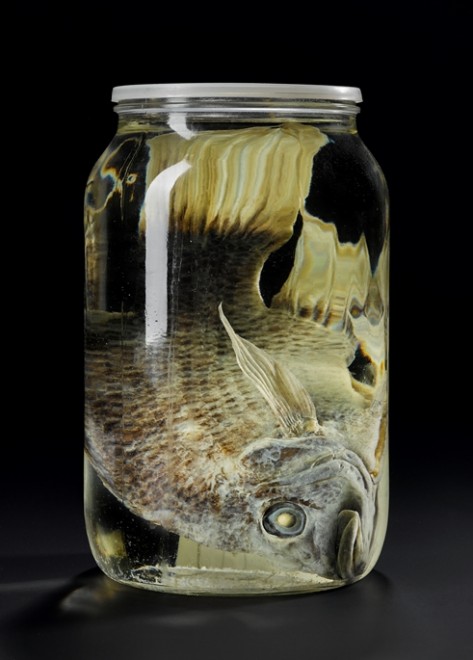
This fish was bred by some hobbyists in England in 2002 and was sent with 11 siblings to ZSL London Zoo in October the same year. Its parents were from Madagascar, but at that time it did not even have a scientific name. Only known from the Mangarahara River in North Central Madagascar, it wasn’t until 2006 that the Mangarahara cichlid was described scientifically as Ptychochromis insolitus. By 2013 only two males survived and zoo staff put out an appeal around the world that they were looking for a female to try and breed this now critically endangered fish. Sadly none could be found and the last male, this one, died on 7 February 2014 and was donated to National Museums Scotland.
In November 2013 Brian Zimmerman, Curator of ZSL London Zoo’s Aquarium, led an expedition to try and find out if the Mangarahara cichlid still survived in the wild. It was feared extinct because of intense forest loss and river diversions created for irrigation for rice farming and other agriculture, which caused its habitat to dry up. After days of searching empty streams, and rapidly losing hope of finding any cichlids, Brian and his team visited a tiny village on the edge of a now-disconnected tributary of the Mangarahara River, where they found a few fish. Eighteen were transferred to an aquaculture facility in Andapa, where they have since bred.
The dire conservation status of the Mangarahara cichlid was spotted in time and action was taken to save the last few. There is a long way to go, but hopefully one of the world’s rarest species of fish now has a more secure future.
Header image: Analamazaotra Reserve, Perinet, MADAGASCAR by Bernard Dupont. Photo from Flickr used under a Creative Commons CC BY-SA 2.0 licence.
